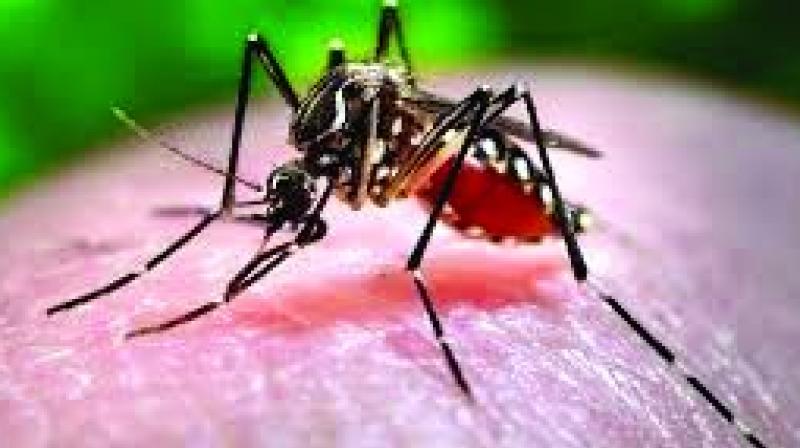Warm February climate has mosquitoes swarm Hyderabad

Hyderabad: The comparatively high temperatures this winter have encouraged mosquito breeding in Hyderabad.
Four mosquito species that were uncommon in Hyderabad and mainly found in villages, have invaded the twin cities. Now there are seven types of mosquito species in the city - Anopheles, Culex, Aedes, and Mansonia.
The mosquito menace reported across Greater Hyderabad and the Secunderabad Cantonment area is serious. “Swarms of mosquitoes attack us; we have to shut our doors and windows after sunset to elude the nuisance,” says Aarti Devi, a resident of Srinagar colony.
She says the mosquitoes hide in corners and under furniture in the daytime and get active at night. “Mosquito repellent has to be on through the evening and night,” she added.
For a majority of people in the city this is not a seasonal problem but persists throughout the year. The two techniques adopted by the GHMC - anti-larva and fogging - have proved unsuccessful.
Complaints on the mosquito menace pour in from Mehdipatnam, Asifnagar, Shali banda, Marredpally, New Bowenpally, Alwal, Keesara, Kondapur, Quthbullapur, Serilingampally and many others.
“It is intolerable and disturbs our sleep apart from the constant fear of exposure to diseases like malaria and dengue. This problem is troubling us in particular, regardless of the fogging operation,” says Bala Krishna of Radhika Colony in Secunderabad.
Dr C. Srinivasulu, assistant professor at the Wildlife Biology & Taxonomy Laboratory at Osmania University, explains that “the troublesome, disease-transmitting and nuisance-causing species are Anopheles, Culex, Aedes, and Mansonia genus. Mosquitoes have a varied lifespan, ranging from a few days to several months. Some species in general and many in colder regions live during warmer months and die in winter.”
He explains why February is a particularly bad month. “Mosquitoes deposit their eggs in water. The eggs in winter through the process of diapause (arresting of growth) pass through the colder climatic conditions to hatch when optimal temperatures are available, which coincides with the month of February. The small climatic change brought with the onset of longer days and warming environment favours mosquito emergence, and it is usually during this period that mosquito menace is reported.”
The municipal corporation agrees that January and February are the worst months. Venkatesh V., chief entomologist of the GHMC, says the main breeding grounds are tanks, nalas and sewerage pools.
“GHMC is carrying out spray operations to arrest and destroy the eggs. For larvae-turned-adults, fogging operations are carried out. GHMC is doing its part, but we need the active participation of citizens to eliminate the menace, like getting rid of stagnant water in vessels, coolers, pots and even wash basins. Unless the breeding source is eliminated, the nuisance cannot be curbed.”
While private spaces are within the purview of individuals, public spaces come under the GHMC and these are the spaces where stagnant water collects, in the rubble from dug up roads, leaking sewage and water lines and uncleared garbage.

